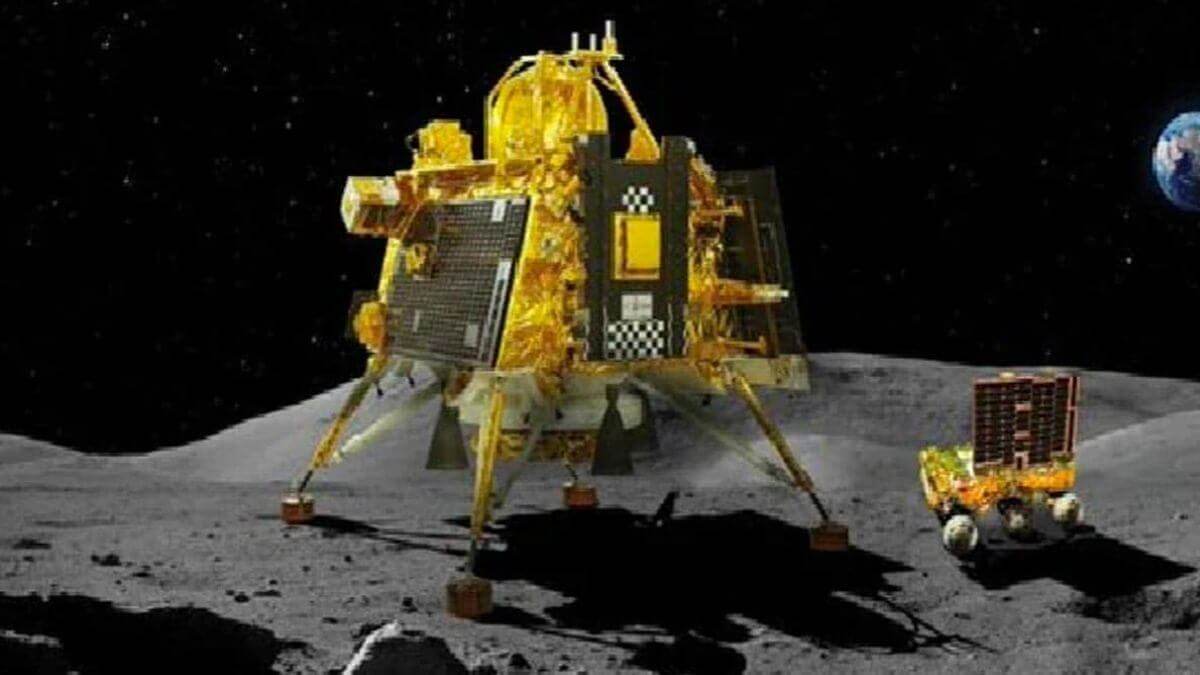Last week, the Chandrayaan 3 — an Indian spacecraft — became the first to land on the unexplored south pole of the moon.
Nearly 7 million people watched the landing’s YouTube livestream. Scientists and officials clapped and hugged each other as the spacecraft landed and people across the country broke out in celebration, setting off firecrackers and dancing in the streets.
But what made this landing special?
Race to the South Pole
The successful landing of Chandrayaan-3 made India the fourth nation to successfully land a spacecraft on the moon after the US, China, and the former Soviet Union.
However, India is the first to land on the moon’s South Pole, as the rough terrain in the area makes it highly challenging for spacecraft to land there. Thus far, this had prevented even countries with developed space programmes from carrying out missions requiring such expertise. No other country has even attempted to soft land on the moon’s South Pole.
The Union Cabinet joins the Nation in celebrating the historic success of the Chandrayaan-3 Mission to the Moon.
— PMO India (@PMOIndia) August 30, 2023
The Cabinet also appreciates the monumental achievement of our scientists. This is not just a victory for our space agency but is a bright symbol of India’s progress…
But, for India, this is not the first attempt of the mission. The Chandrayaan-3, which comprises the Vikram lander and Pragyan rover, is in fact a follow-up mission of 2019’s Chandrayaan-2 mission, which only partially succeeded, as the spacecraft crashed while attempting to soft land due to a technical glitch.
The soft landing is thus crucial for lunar exploration and a mark of India’s standing as a space power.
Notably, the Chandrayaan-3 was launched with a budget of only $74 million.
What is the Chandrayaan-3 Doing on the Lunar South Pole?
Scientists believe that the surface area of the South Pole, which remains in permanent shadow, could hold huge reserves of frozen water.
Chandrayaan-3 Mission:
— ISRO (@isro) August 30, 2023
Smile, please📸!
Pragyan Rover clicked an image of Vikram Lander this morning.
The 'image of the mission' was taken by the Navigation Camera onboard the Rover (NavCam).
NavCams for the Chandrayaan-3 Mission are developed by the Laboratory for… pic.twitter.com/Oece2bi6zE
In this light, one of the mission’s main goals is to look for signs of water-based ice, which scientists say, could support human habitation on the moon in the future. Potentially, it could also be used to make spacecraft propellant for those headed to Mars and other distant destinations.
During its two-week stay on the moon, the Chandrayaan-3 is expected to run a series of experiments, including a spectrometer analysis of the mineral composition of the moon’s surface.
In fact, most recently, it confirmed the existence of aluminium, calcium, iron, chromium, titanium, manganese, silicon, and oxygen in the region.
Apart from this, the Indian Space Research Organisation (ISRO) website stated that the Chandrayaan-3 spacecraft will:
“Measure the near-surface plasma (ions and electrons) density and its changes with time; carry out the measurements of thermal properties of the lunar surface near-polar region; ensure seismicity around the landing site and delineating the structure of the lunar crust and mantle; derive the chemical composition and infer mineralogical composition to further our understanding of Lunar-surface.”
Chandrayaan-3 Mission:
— ISRO (@isro) August 29, 2023
In-situ scientific experiments continue .....
Laser-Induced Breakdown Spectroscope (LIBS) instrument onboard the Rover unambiguously confirms the presence of Sulphur (S) in the lunar surface near the south pole, through first-ever in-situ measurements.… pic.twitter.com/vDQmByWcSL
Future Plans
Chandrayaan-3 has now set the precedent for new technology development that will be used for future interplanetary missions.
The success also further boosts ISRO’s image as a highly advanced space research agency.
In 2014, India became the first Asian nation to put a craft into orbit around Mars.
Next month, the agency plans to send a probe towards the Sun.
In 2024, the agency is planning on launching a three-day crewed mission into Earth’s orbit.
As part of collaborative interplanetary programmes, ISRO is planning its first mission to the International Space Station in 2024 in collaboration with the US.
In another joint mission with Japan in 2025, ISRO will send another probe to the moon, and an orbital mission to Venus within the next two years.

